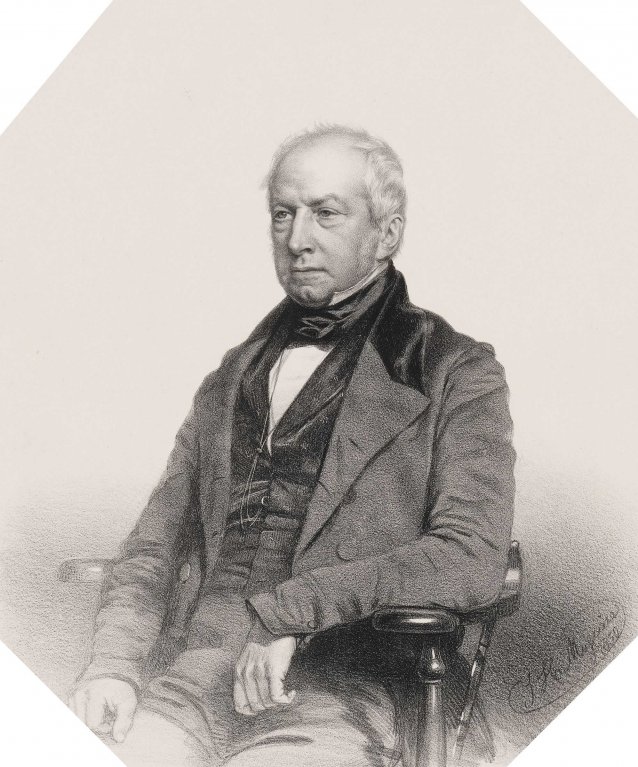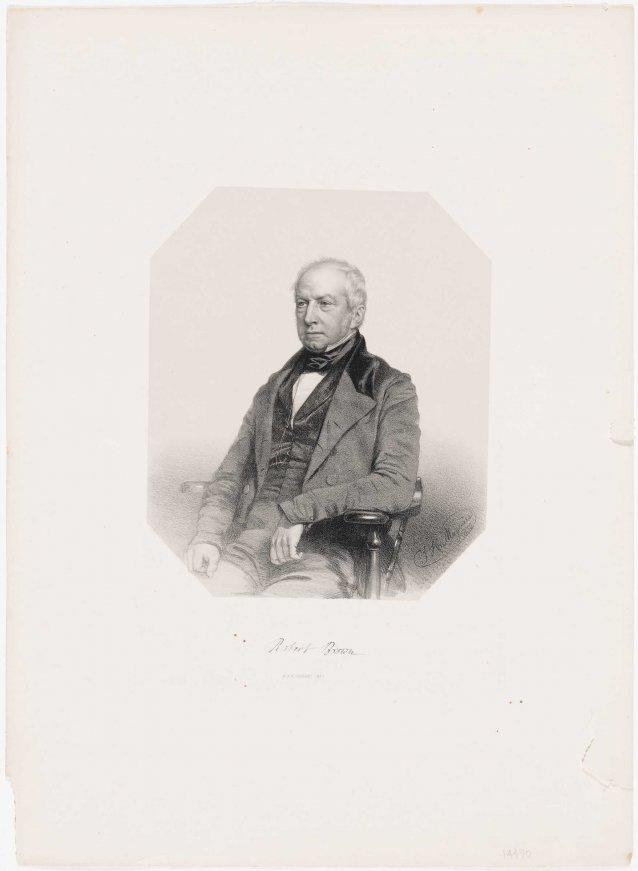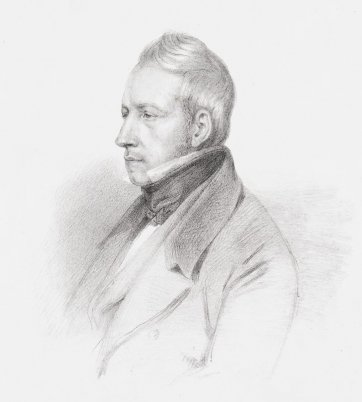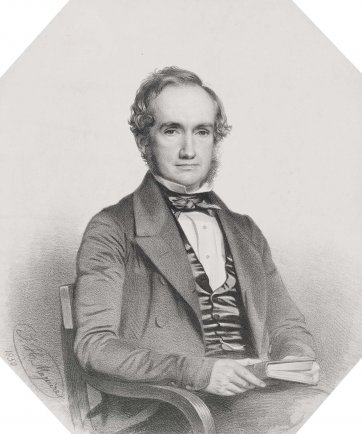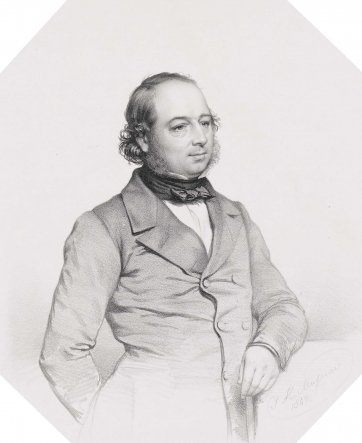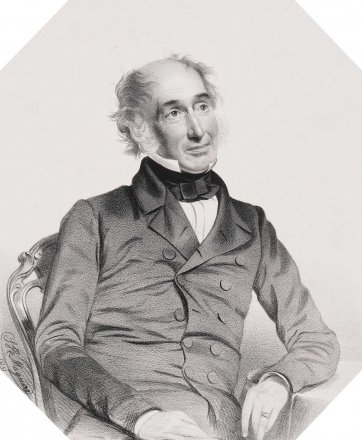Robert Brown (1773–1858) is considered ‘the father of Australian botany’. A clergyman’s son, Brown became interested in natural history while at school and, later, while studying medicine at Edinburgh University. He discontinued his medical studies in 1793 and enlisted in the army, all the while becoming increasingly involved in natural history pursuits, corresponding with prominent botanists and making various plant-collecting journeys in Scotland and Ireland, where his regiment was stationed. He met Sir Joseph Banks in 1799. Late the following year, Brown accepted Banks’s offer of the position of naturalist on a surveying voyage aboard HMS Investigator, commanded by Matthew Flinders, to establish whether New Holland was one or several islands. The expedition left England in July 1801 and after calling at Madeira and the Cape, arrived at Cape Leeuwin on the south coast of Western Australia in December. Flinders then proceeded east, charting for the first time the coastlines of South Australia and Victoria before arriving in Sydney in May 1802. Flinders sailed north from Sydney two months later, circumnavigating the entire continent before the Investigator’s leaks and the deteriorating state of the crew forced his return to Sydney in June 1803. Brown had collected extensively during the voyage, becoming the first botanist to encounter areas such as Victoria and identifying numerous new species. While Flinders sailed home to procure another ship, Brown and the expedition artist, Ferdinand Bauer, remained in the colony. During the summer of 1803–04, Brown visited Port Phillip and the Kent Group islands in Bass Strait before continuing to Van Diemen’s Land. He spent six months in the vicinity of Hobart, conducting explorations of Mount Wellington and the Derwent and Huon River valleys, making detailed observations of the Aboriginal people, and collecting over 500 species of plants. In New South Wales again during 1804, he collected further in the Sydney area and explored the Hunter River before returning to England on the refitted Investigator in May 1805. Despite much of the material collected along the southern coast being lost in the wreck of the Porpoise in August 1803, Brown’s work during the expedition had resulted in a collection of some 3600 plants (more than half of which were previously unknown to science) as well as zoological and geological specimens. In December 1805, he was appointed clerk, librarian and housekeeper to the Linnean Society of London, but (due to Banks’s influence) was enabled to keep working on a publication of his findings from the Investigator voyage. This work, Prodromus florae Novae Hollandiae et Insulae Van Diemen, appeared in 1810. The same year, Brown succeeded Jonas Dryander to the position of Bank’s librarian; and in 1811 he was elected a Fellow of the Royal Society. When Banks died in 1820, his collections were bequeathed to the British Museum, but with a life interest for Brown. When the collections were transferred to the Museum in 1827, Brown negotiated for himself the new position of head of the Botanical Department. Throughout this time, Brown continued to publish, travel and research, undertaking important work on pollination among other topics. He was awarded Royal Society’s highest honour, the Copley Medal, in 1839; and became President of the Linnean Society in 1849. He continued his work at the British Museum until a year before his death at age 85.
Collection: National Portrait Gallery
Purchased 2013
The National Portrait Gallery respects the artistic and intellectual property rights of others. Works of art from the collection are reproduced as per the
Australian Copyright Act 1968 (Cth). The use of images of works from the collection may be restricted under the Act. Requests for a reproduction of a work of art can be made through a
Reproduction request. For further information please contact
NPG Copyright.
